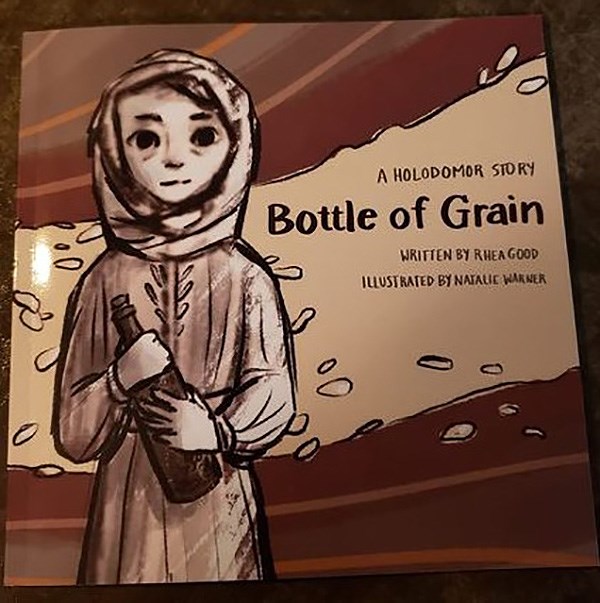Many people in this area and this province have Ukrainian roots and for many of you, this week might carry personal value, while for others, it remains an important time to remember.
One of our long-time readers suggested that with Holodomor Remembrance Week in Saskatchewan underway, concluding with the Holodomor Remembrance Day on Nov. 27, we probably should once again look at this tragic page in history.
Being of Russian descent, I didn't know too much about this tragedy until I came to Canada. I'm not sure how so. Maybe because for Russia and Ukraine, this period was always a big political stumbling rock, and the topic is largely avoided in Russian schools. Or maybe less attention to it was paid because my education was more focused on the country's history. And while Holodomor is a dark page of the common Soviet past, it still wasn't as much of a focus. Maybe, Russia just has too many tragedies that while everyone knows the term Holodomor and knows a little bit about events of those years, we never either studied it in-depth or had it be a big part of public discourse.
Most of what I've learned about the events of those years, I learned while already here, thanks to the patient and knowledgeable people I met.
Holodomor, which literally means "extermination by hunger," wasn't recognized as even a famine until near the end of the Soviet Union. Until then, the events of those times were addressed as "difficulties with provisions."
For the first time, the word Holodomor was used in 1978 by researchers working out of Canada and the U.S. It was first recognized as famine by the Soviet government in 1987.
Ukrainian Verkhovnaya Rada (Ukrainian parliament) recognized Holodomor as an act of genocide against the Ukrainian people imposed by the Soviet Union through a man created famine in 2006, and since then over a dozen countries, including Canada, joined Ukraine in that.
Saskatchewan, with its rich history of Ukrainian immigration, was the first jurisdiction in North America to recognize the Ukrainian famine of 1932-33 as genocide back in 2008, when the province passed The Ukrainian Famine and Genocide (Holodomor) Memorial Day Act.
Scholars estimate that events of those times claimed at least 3.9 million lives in Ukraine, with up to 8.7 million deaths altogether across all affected regions of the USSR, and Ukraine seeing the highest losses. Outside Ukraine, the catastrophe affected such regions of Russia as Povolzhye, Kuban, central Ural and Western Siberia, as well as Belarus and Kazakhstan.
Most historians now agree that the main reason for the terrible famine was the involuntary and repressive politics of the collection of grain for state grain stockpiles implemented by the Bolsheviks, which affected farms in particular regions.
Despite a serious drought affecting the farming regions, the Soviet government wanted the collective farms to fulfill often ridiculously high plans. To do so, local Bolsheviks would implement systems of red and black boards, where red was the recognition for those who delivered, and black pretty much meant a death sentence for the whole villagers that failed.
If farmers didn't fulfill the grain plan, the government would confiscate any other provision they had. Officially such an approach should have "stimulated" the farmers to give their "hidden grain," which in reality just didn't exist.
In August 1932, Stalin also introduced a new repressive law, which officially was aimed at protecting national estate, supposedly 小蓝视频 embezzled by dispossessed kulaks (formerly wealthy farmers) and other antisocial elements. The bylaw assumed execution with entire property confiscation for anyone stealing state-owned assets, which was almost everything in a communist state; and 10 years imprisonment, if there were any extenuating conditions. Convictions didn't fall under amnesty.
This law remained in history as a "law of five spikelets" as almost everyone who would pick up a few spikelets of wheat at a communal field would fall under it. In its first year, over 150,000 people were charged under that law. It was in place until 1947, but 1932-33 was when it was enforced the most.
Such Draconian measures were in place in most regions affected by famine, populated by mixed nations, but in many areas, even outside Ukraine, there was a high percentage of Ukrainians.
While the events and crimes of those years are described by many witnesses and are documented, nevertheless, many scholars don't agree that Holodomor was a genocide as it's defined by the UN convention.
Since the terrible famine resulted by drought and enforced collectivization, which made farmers give up the means of survival, and it affected several regions of the USSR, the Russian government insists that the tragedy of 1932-33 wasn't an act against the Ukrainian people. Russia still hasn't recognized Holodomor as genocide, stating it was a famine, rather than state-manipulated extermination.
Throughout the years, Holodomor has remained a greatly political topic with countries using it as an exchange coin for building alliances. But in reality, it was a great tragedy that claimed millions of lives during peacetime. And while it's been almost 90 years, to fully heal, this trauma needs to be recognized and remembered.






